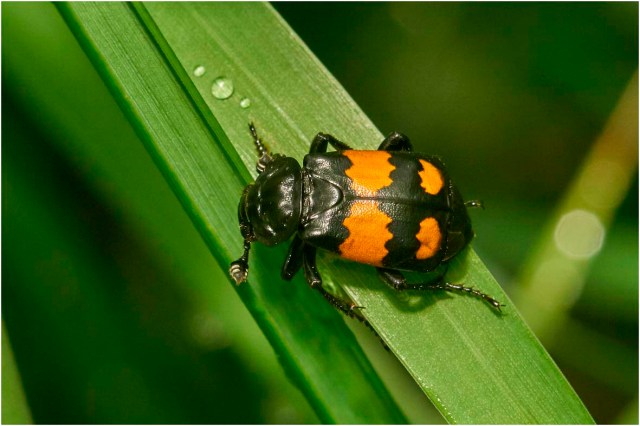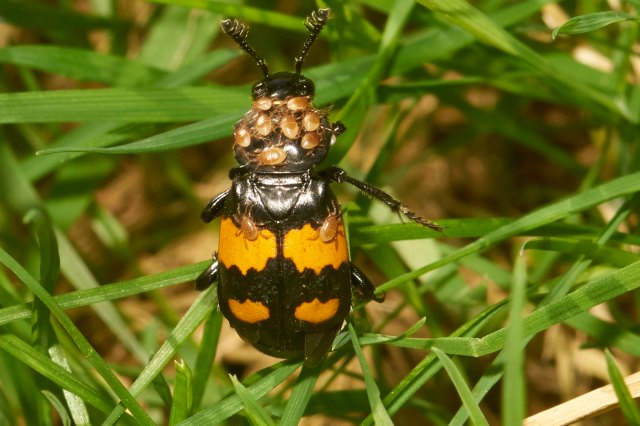![]() During a recent walk around Woodwalton Fen I came across two brightly coloured beetles. I didn’t know what species they were so when I returned home I did some investigation and found they were Burying Beetles. Apparently these beetles have a bit of a gruesome life cycle – they live in the carcasses of dead animals and birds.
During a recent walk around Woodwalton Fen I came across two brightly coloured beetles. I didn’t know what species they were so when I returned home I did some investigation and found they were Burying Beetles. Apparently these beetles have a bit of a gruesome life cycle – they live in the carcasses of dead animals and birds.

A brightly coloured Burying Beetle
But why are they called Burying beetles I hear you ask. Well, a male and female Burying beetle meet by a dead animal. They will bury the carcass together and the female will lay her eggs in the dead body. The larvae hatch and feed on the rotting flesh.
These beetles can detect rotting bodies metres, possibly kilometers away.

Several hitchhikers on this beetle
You can see on the above photo there are small creatures on this beetle. More research and help from a beetle expert revealed these are photectic mites. Like Burying beetles, the mites breed in decaying animals but can’t disperse between breeding places on their own so are hitching a lift on this beetle.
The mites don’t really harm the beetle too much. They just use the beetle as a way of travelling from one place to another
There are several species of burying beetle in the UK which can be difficult to tell apart.
The burying beetle is Nicrophorus vespilloides by the way, the only black and orange species in which the antennal clubs are also black!
Some Facts About The Burying Beetle
- Also known as the Common Sextant beetle.
- Can be seen from April to October.
- Length: up to 3cm.
- Their antennae are used to detect rotting bodies.








